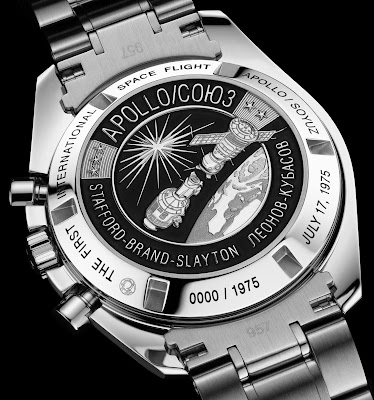


Above: Deke Slayton and Aleksey Leonov meet in space. © NASA
On July 17, 1975, the unimaginable happened: two Cold War-rivals met in space. The timing was propitious as both super-powers were suffering the debilitating effects of their belligerency down on planet earth. It was a perfect distraction for Americans reeling from the US military defeat in Vietnam, the worsening US economy and the unceremonious dumping of arch-villain Richard Nixon as President. It also provided a useful diversion to the Soviets, suffering under the crushing Brezhnev regime and the privations of a bleak and oppressive one-party state.
The Apollo-Soyuz Test Project saw astronauts Tom Stafford, Donald K. "Deke" Slayton and Vance Brand in an Apollo command and service module docking with a Soyuz capsule manned by Russian cosmonauts Aleksey Leonov and Valeriy Kubasov. This historic ‘coupling’ ushered in a new era of cooperative ventures between two countries that once were fierce rivals in the "space race." As Tom Stafford remarked, the Apollo-Soyuz mission "showed the whole world that if the Soviet Union and America could work together in space, they could work together on the Earth." And so, while the effluxion of time has muted the significance of this important event, it was a very big deal at the time. Big enough indeed for Omega to mark the occasion with a limited edition Speedmaster release at Basel 2010.
The OMEGA Apollo-Soyuz “35th Anniversary” Speedmaster Professional is like any other Professional with the exception of its unusual dial. In a limited edition release of 500 pieces, it is powered by the indestructible hand-wind calibre 1861, a direct descendant of the Moon Watch. (click here for an excellent review of the 1861 by Jack Forster)
The dial was produced from a meteorite (Omega has not revealed where or when the object was found) that hurtled through the earth’s atmosphere and survived high-speed impact with the terrestrial surface. The meteorite’s unusual structure is the result of its very high temperature when it enters the Earth’s atmosphere, followed by a period of cooling. The dial is a single piece cut from the meteorite; accordingly, because no two pieces of the meteorite are exactly alike, each watch in this limited edition is absolutely unique.
The black colour of the meteorite dial is the result of a surface oxidation process. The silvery seconds hand and chronograph counters appear in the meteorite’s natural colour. In the flesh, this is a stunning looking piece and may well turn out to be eminently collectible because of its limited numbers and one-off dial treatment.
Click on the above pictures for high-res images and for an incredible resource on Speedmasters click here for jean-Michel's Speedmaster-Mission.



